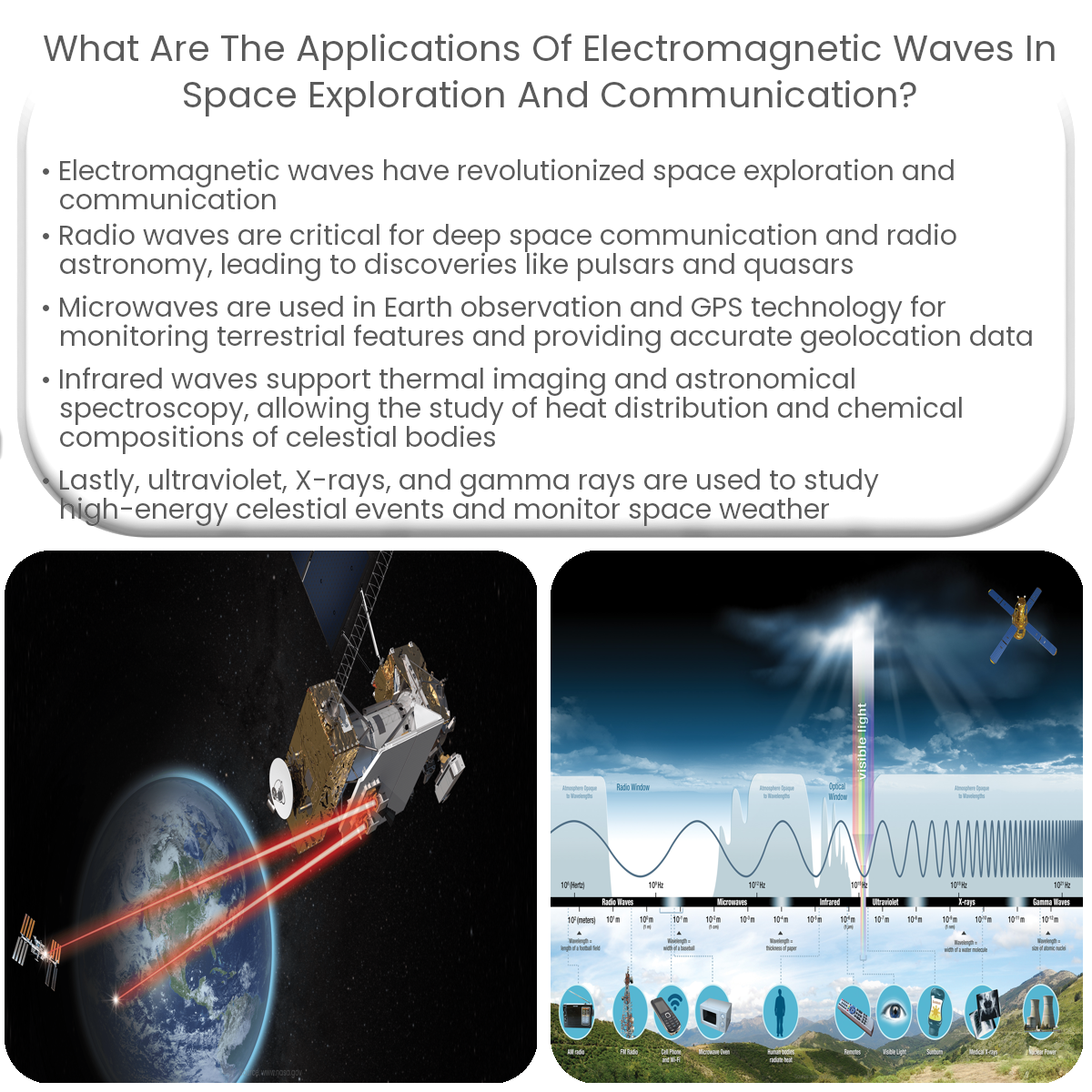Electromagnetic waves have revolutionized space exploration and communication, enabling scientists and researchers to study the universe in unprecedented detail.
Applications of Electromagnetic Waves in Space Exploration and Communication
Electromagnetic waves have revolutionized space exploration and communication, enabling scientists and researchers to study the universe in unprecedented detail. This article outlines the various applications of electromagnetic waves in space exploration and communication, ranging from radio waves to X-rays and gamma rays.
1. Radio Waves
- Deep Space Communication: Radio waves are extensively used for communication with spacecraft and probes located in deep space. These waves can travel vast distances with minimal attenuation, making them ideal for transmitting data from space missions to Earth and vice versa.
- Radio Astronomy: By observing radio waves emitted by celestial bodies, radio astronomy allows scientists to study the properties and behavior of objects in space. This branch of astronomy has led to the discovery of pulsars, quasars, and other astronomical phenomena.
2. Microwaves
- Earth Observation: Microwave remote sensing is used in Earth observation satellites to monitor various terrestrial features, including land use, vegetation, and natural disasters. Microwave sensors can penetrate clouds and provide data regardless of weather conditions or daylight availability.
- Global Positioning System (GPS): Microwaves are employed in the Global Positioning System to transmit signals from satellites to GPS receivers on Earth. This technology provides accurate geolocation data for navigation and positioning purposes.
3. Infrared Waves
- Thermal Imaging: Infrared waves are used to detect and map the heat emitted by celestial bodies. Thermal imaging in space exploration enables scientists to study the temperature distribution of planets, stars, and other objects in the universe.
- Astronomical Spectroscopy: Infrared spectroscopy allows researchers to analyze the chemical composition of celestial objects. By examining the absorption lines in an object’s spectrum, scientists can identify the elements and compounds present in its atmosphere or surface.
4. Visible Light
Visible light is widely employed in space telescopes and cameras to capture high-resolution images of astronomical objects. The Hubble Space Telescope, for example, uses visible light to produce detailed images of distant galaxies, nebulae, and other celestial phenomena.
5. Ultraviolet, X-rays, and Gamma Rays
- High-Energy Astronomy: Ultraviolet, X-ray, and gamma-ray telescopes enable scientists to study high-energy events and objects in the universe, such as supernovae, black holes, and neutron stars. These observations provide valuable insights into the extreme physical processes occurring in these environments.
- Space Weather Monitoring: Observations of the Sun in the ultraviolet and X-ray wavelengths help scientists monitor solar activity and predict space weather events, such as solar flares and coronal mass ejections. These events can have significant effects on satellite operations, telecommunications, and power grids on Earth.


